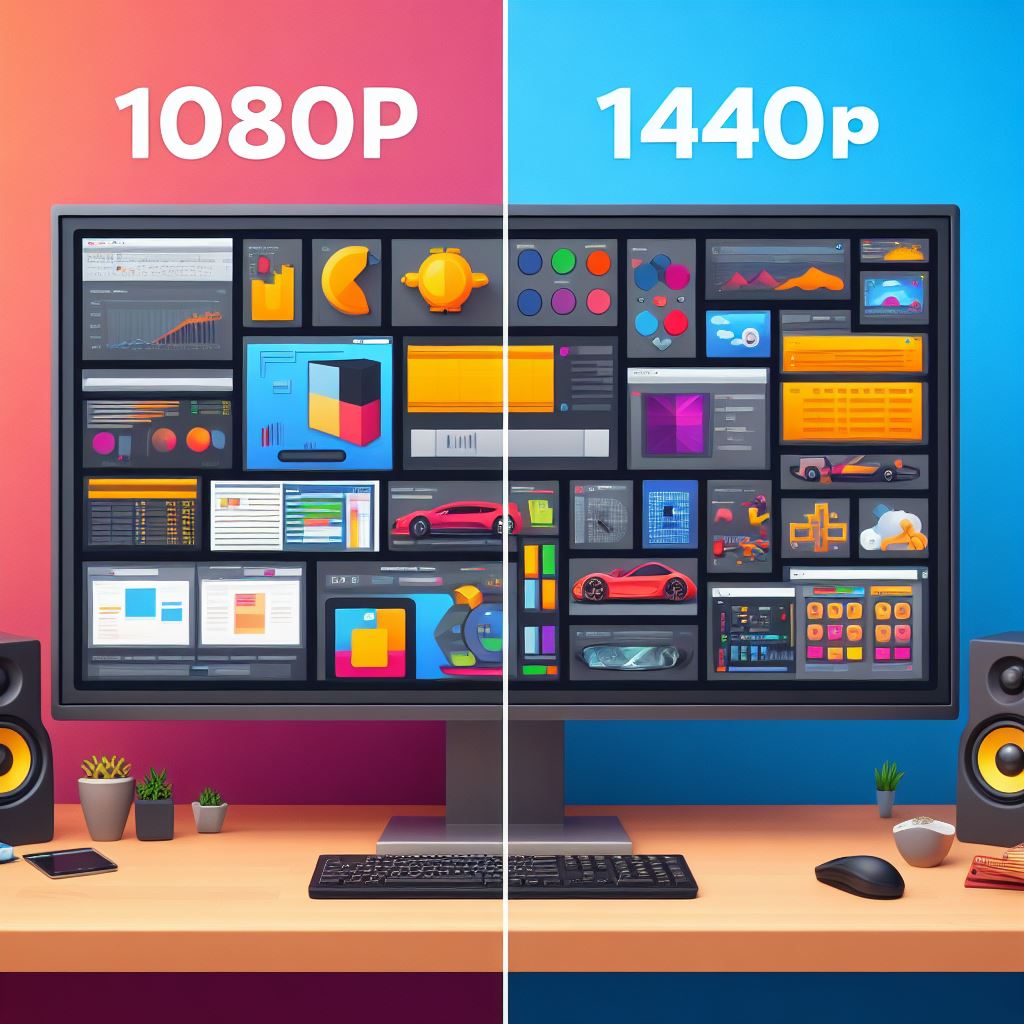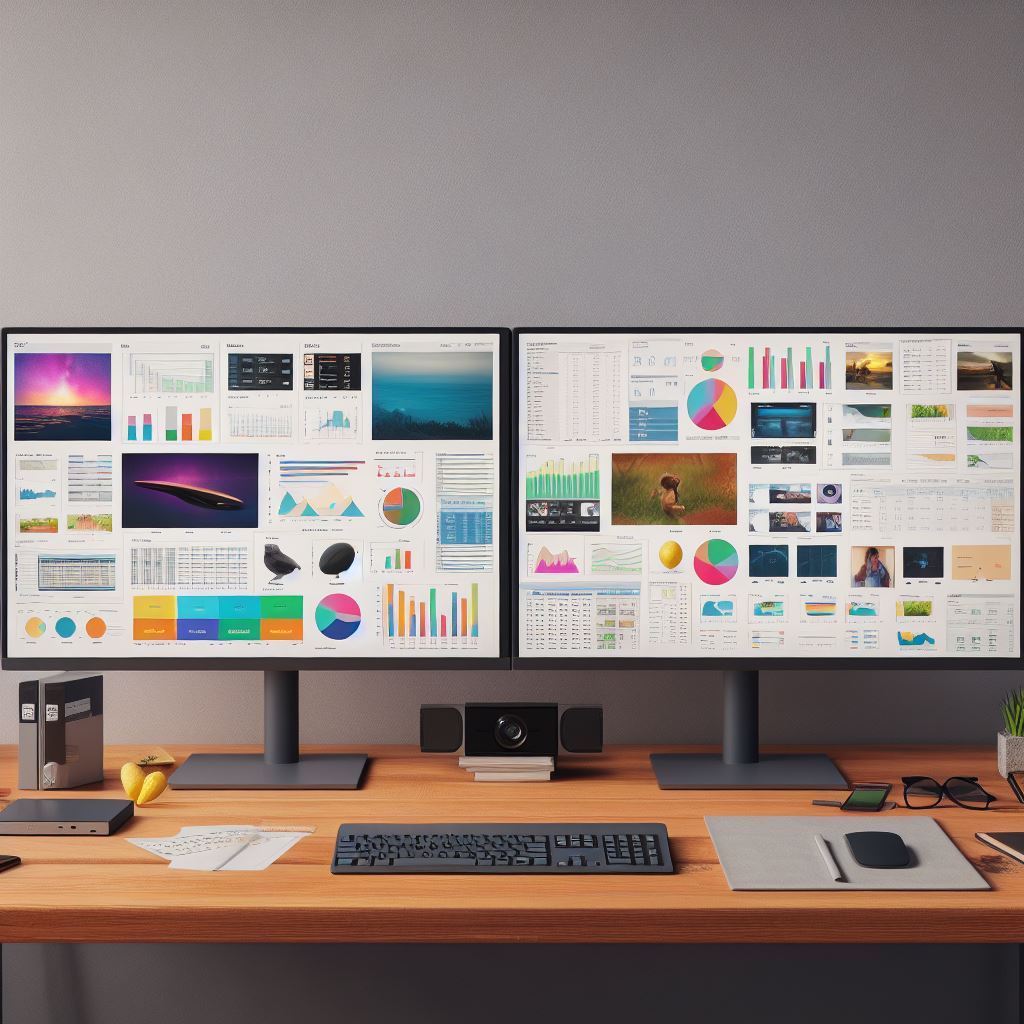The 1440p Dilemma: Is Upgrading from 1080p Really Worth It?
Embracing a 1440p display brings tangible benefits: text appears more legible even when zoomed out, content exhibits heightened clarity and sharpness. The intricacies of window scaling further enhance this experience, allowing for the accommodation of more on-screen content. If you find yourself frequently engaged with your monitor and have the financial flexibility, the move to a higher resolution is undoubtedly worthwhile.

However, for those on a budget or who utilize their monitors sparingly, 1080p remains a viable option. The improvement is perceptible, particularly when adjusting window settings to match the resolution or when engaging with high-resolution content.
| Screen Size | Resolution | Pixel Density | Notable Features |
|---|---|---|---|
| 24 inches | 1080p | Lower PPI | Standard for Budget Monitors |
| Screen Size | 1440p | Higher PPI | Crisper Details, Improved Text Clarity |
|---|---|---|---|
| 27 inches | 1080p | Lower PPI | Budget-Friendly, Acceptable for Many Users |
| Screen Size | 1440p | Moderate PPI | Enhanced Detail, Better for Productivity |
|---|---|---|---|
| 32 inches | 1080p | Lower PPI | May Exhibit Pixelation at Close Distances |
While a 1080p 27-inch monitor is perfectly adequate for watching movies, playing games, and general browsing activities, its usability extends to various tasks, including text-related activities. However, its limitation lies in the fact that it doesn’t provide a surplus of on-screen content compared to a 1440p display.
This discrepancy arises due to the way Windows scaling operates. Regardless of the display size, ranging from 15 inches to 32 inches, the 1080p resolution renders the same amount of content, albeit in a larger format.

| Aspect | 1080p 27″ | 1440p 27″ |
|---|---|---|
| Resolution | 1080p | 1440p |
| Pixel Visibility | Pixels may be visible | Individual pixels less visible due to higher resolution |
| Usability | Suitable for various tasks, including movies, games, and browsing | Enhanced clarity and sharpness, particularly beneficial for text and detailed content |
| Content Display | Same amount of content displayed regardless of screen size within the range of 15″ to 32″ | Offers more on-screen content due to higher resolution |
| Optimal Size | 27 inches | 27 inches (Provides ideal balance for 1440p resolution) |
| Panel Influence on Pixel Visibility | Panel type influences pixel visibility | Panel type still relevant, but 1440p resolution generally mitigates pixel visibility issues |
| Visual Experience with 1440p Content | Limited improvement if content is not optimized | Noticeably sharper and more pleasing visual experience with optimized 1440p content |
| Consideration for 27″ Size | 27″ may feel somewhat large for 1080p resolution | Well-suited for 1440p resolution, avoiding potential visual clarity issues |
The perceptible difference becomes more evident when the setup is optimized, but it may not be readily apparent in a store environment where consistent low-resolution sources obscure the nuanced benefits of higher resolutions.
This content is collaboratively crafted and vetted by Shubham, a Mechanical Engineering specialist. His passion for unraveling the intricacies of machinery and consumer electronics mirrors his avid interest in gaming. With his wealth of expertise, Shubham adeptly navigates readers through the complexities of audio, home appliances, and everyday products, guaranteeing a smooth and enjoyable shopping journey. For every product you read about on this site we do rigorous research and testing behind the scenes to bring you the best value for money options. For any query directly reach out to me at my personal Instagram - https://www.instagram.com/shubhamgarg8024/





